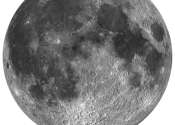AI illuminates permanently shadowed regions on the moon
With the help of artificial intelligence, an international research team led by ETH Zurich has explored the moon's permanently shadowed regions. The information they have obtained about the area's surface properties will ...









